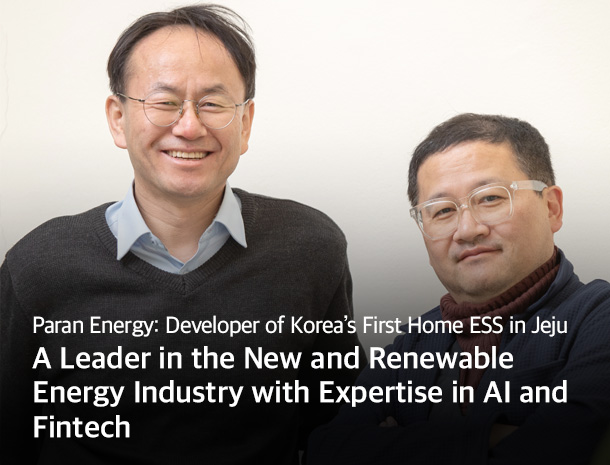Introduction of Companies
- Home
- Jeju Life
- Local Businesses
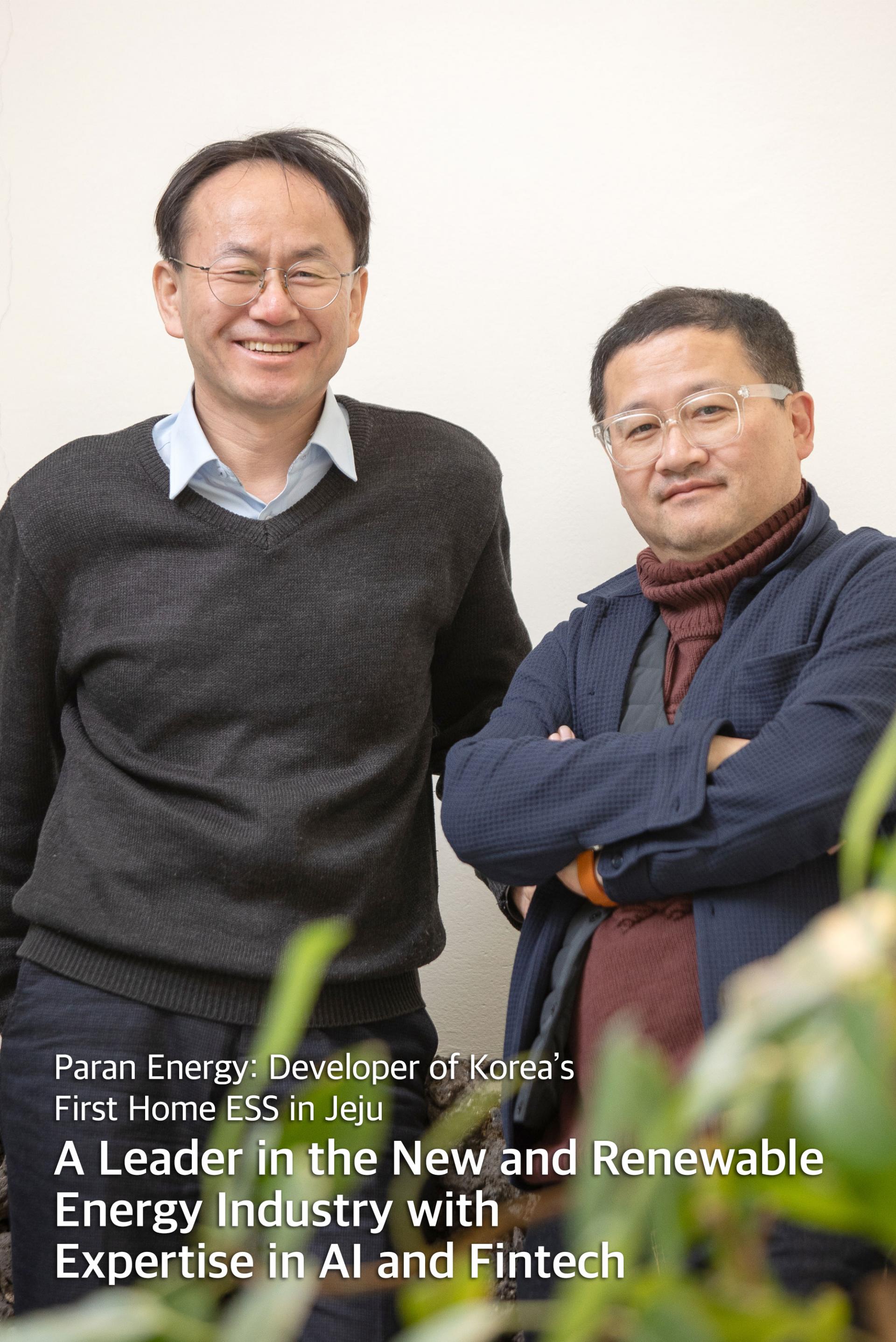
"Just like humans need to rest to rejuvenate, all forms of energy require downtime to prepare for periods of high demand. The Korea Power Exchange (KPX) facilitates this with the demand response (DR) program, also known as the “Energy Comma.” This program rewards both large businesses and individual households with monetary incentives or points for saving energy during peak hours. As an energy demand management service provider for the DR program, Paran Energy analyzes when and how people use energy and suggests more efficient consumption patterns. Through continuous research and development (R&D), we aim to become a leader in proposing future directions for the new and renewable energy market and driving positive changes."
Kim Seong-cheol, CEO, Paran Energy
|
In an age of trading saved energy, new solutions emerge for environmental issues |
Unlike other consumable commodities, electricity is notably difficult to store. In addition, its demand and supply occur at the same time; it is made to be used, and used to be made. For this reason, Paran Energy focused on the smart use of power rather than on generation. The company offers a power demand management platform, personalized energy consulting, and more, to help users save energy efficiently. It introduces new trends in electricity consumption, carving out a new chapter in Korea’s sharing economy where people can trade electricity with their neighbors.

Q The Neighbor-to-Neighbor (N2N) Power Trading Service is a demand management platform that generates value by allowing users to trade excess electricity with their neighbors. What inspired you to develop the service?
As more users generate their own solar power, the demand for green energy has increased. However, discrepancies in consumption patterns often lead to significant power wastage―for example, electricity generated by public utilities on holidays or by educational institutions during vacations. While surplus power can be sold to Korea Electric Power Corporation (KEPCO), accurately calculating its amount and value is challenging. To address this inefficiency and efficiently utilize surplus power, we developed the Neighbor-to-Neighbor (N2N) power trading service in 2020. Paran Energy earns commissions by facilitating power trades, such as matching users with neighbors and assisting with bill settlement. Currently, no law specifically regulates power trading between individuals, so we operate under a regulatory demonstration exemption from the Ministry of Trade, Industry and Energy (MOTIE).1 This service benefits both types of consumers: those with photovoltaic (PV) systems can utilize surplus power, while others receive green electricity at lower costs, achieving a win-win situation.
1. A regulatory exemption refers to a provision that waives specific regulations in a limited area to test the stability of new products and services.

Q Seongeup 1-ri, Pyoseon-myeon in Seogwipo, Jeju was selected for the 'Village-level Microgrid Demonstration Technology Development' project led by the MOTIE. Paran Energy's power trading technology was utilized in this project. Can you tell us more about it?
A microgrid is a localized, self-sufficient power system tailored for a small geographic area, where individuals produce and consume their own power by building supply and storage facilities around distributed energy sources, such as PV and wind energy. This project was designed to establish a microgrid infrastructure in Jeju, which is rich in distributed energy. The selection of Seongup 1-ri in Pyeonsan-myeon was driven by its existing PV sites, which are ideal for various simulations, including DR and N2N power trading. The local community was actively involved in the project. We installed Internet of Things (IoT) power meters in over 100 households and are currently testing DR participation and N2N power trading. Although the project ends this October, we plan to continue monitoring and follow up activities for the next five years. Additionally, while still in the planning phase, if Jeju is designated as a distributed energy special zone later this year, it will enable us to expand the power trading technology, currently operational only in Pyoseon-myeon, across the entire province.
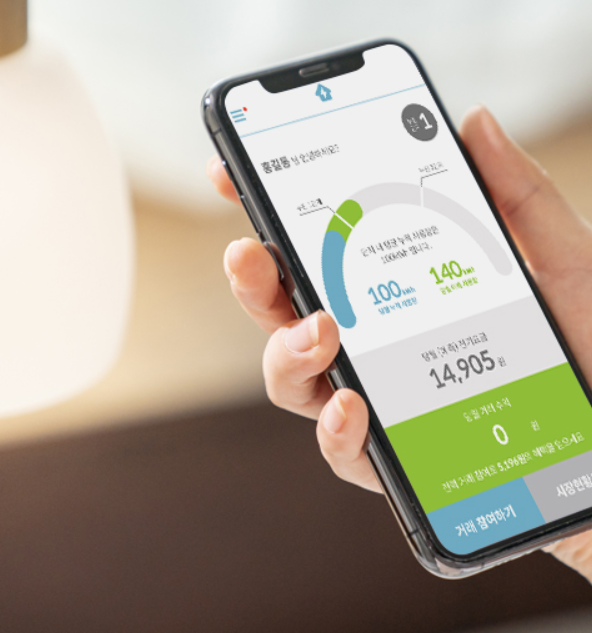 |
Energy Trading platform 'PARAN HOME' usage examples.
|
ESS ESS, the next-generation grid, utilizes new and renewable energy 200% |
Q As an energy consulting firm, Paran Energy offers home ESS. Could you define an ESS and explain its applications in our daily lives?
An Energy Storage System (ESS) converts electricity into physical or chemical energy and stores it for later use, similar to a battery. It’s particularly useful because it allows for the storage of new and renewable energy sources, such as PV and wind energy, which are not produced continuously throughout the day. Much like storing water in anticipation of a water outage, an ESS lets you store electricity to prepare for unexpected outages or emergencies.
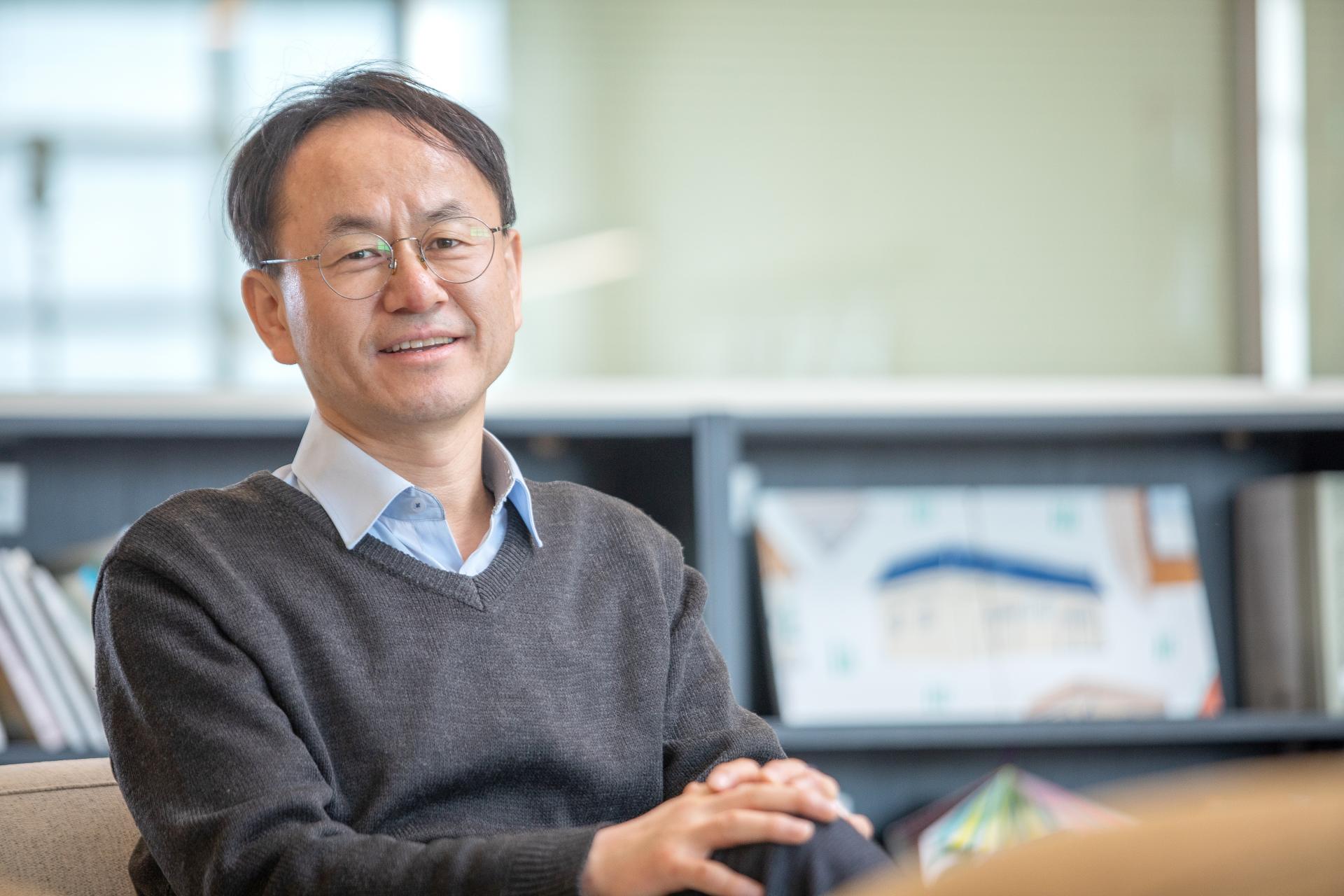
Q Your company won the first government demonstration project for ESS in Korea and are building home ESS units in Jeju. Why did you choose Jeju Island as the demonstration site for this project?
A successful ESS project requires a Time-of-Use (TOU) rate structure, which varies electricity costs based on the time of day and season. For example, using 1 kW of electricity might cost KRW 300 during peak daytime hours and KRW 60 at night. Unlike most areas where households are charged a progressive rate regardless of the time, Jeju officially adopted a TOU rate structure in September 2021. This structure enables users to save money by adjusting their consumption patterns.
Using an ESS can enhance these savings as it allows users to charge the system when the rates are low and use the energy when the rates are high, without any loss in quality. Furthermore, it aids in demand management, including DR programs, and contributes to the national grid by using stored electricity in times of high demand. For instance, in Jeju, the "Plus DR" program rewards users for consuming electricity during periods of surplus production from renewable sources. By charging an ESS during these periods, you can use electricity almost free of charge. This synergy between TOU and ESS is a key reason we chose Jeju for our project. We plant to install ESS units in 12 homes across the province by mid-year and will manage them for the next five years.
|
Paran Energy, leading the paradigm shift in the energy sector |
Q In December 2023, your company earned Korea’s first automated DR certification. What does this achievement mean to you?
In 2023, the Korea Power Exchange (KPX) launched an automated DR certification program to promote DR usage in multi-family houses. This program is designed to automatically control power usage―spanning home appliances, lighting, and air conditioning―since manual participation by households can only achieve so much. We received the first automated DR certification when our DR platform was used in an apartment housing project by the Gyeongbuk City Development Corporation. This certification marks a significant step toward integrating automated DR infrastructure in more residential buildings and sets a precedent for other demand management service providers to follow. Automated DR not only supports ESG (Environmental, Social, Governance) management for construction companies but also help them contribute to environmental and social values.
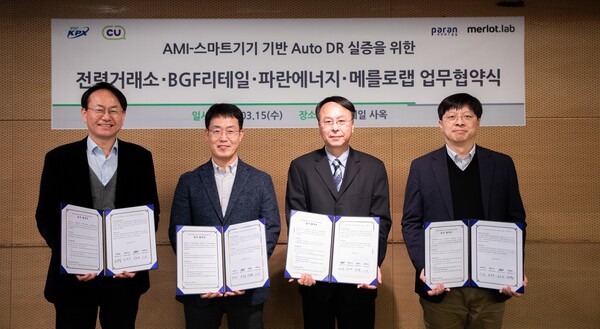
Paran Energy CEO Kim Sung-chul (first left) attended the AMI smart device-based AutoDR agreement ceremony held at BGF Retail's headquarters.
Q What blueprints have you prepared for Paran Energy's future in the DR business?
Electricity users are not just consumers; they can also become power generators. By reducing usage during peak hours as requested by KPX, power plants calculate the saved energy and compensate users at or above the cost of production. This capacity for consumers to generate value with DR is limitless. Once widely adopted, this can make a significant contribution to the power grid. Of course, the success of this initiative depends on the commitment from the demand management service providers. We aim to recruit approximately 100,000 new DR participants this year and over 500,000 by 2026. This initiative will not only help save on electricity costs but also create substantial social value. Furthermore, we plan to elevate Korea's position in the distributed energy sector globally, showcasing our power trading technology and ESS infrastructure currently being tested in Jeju. Paran Energy is committed to leading these advancements in the new and renewable energy market.

